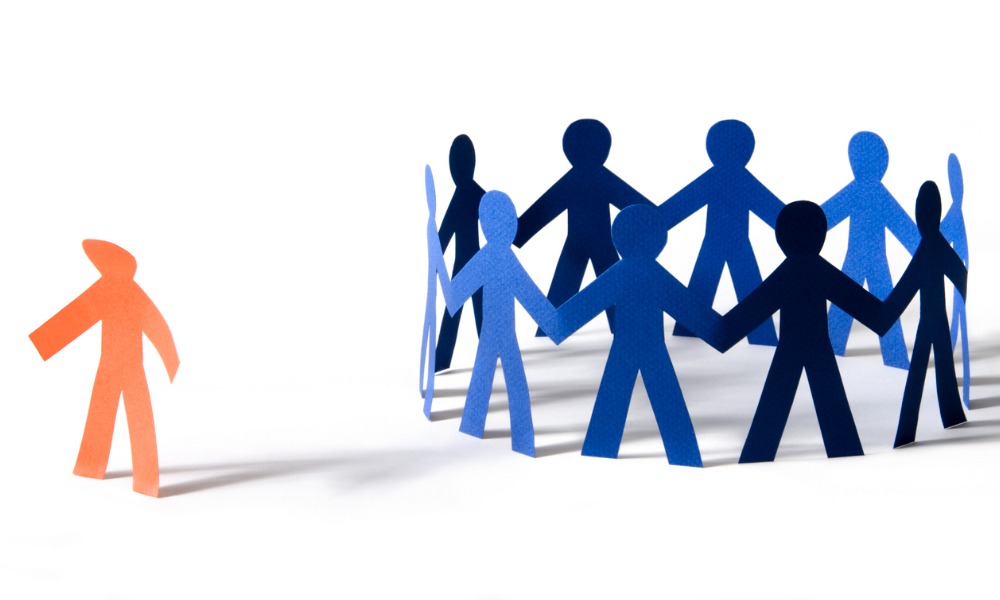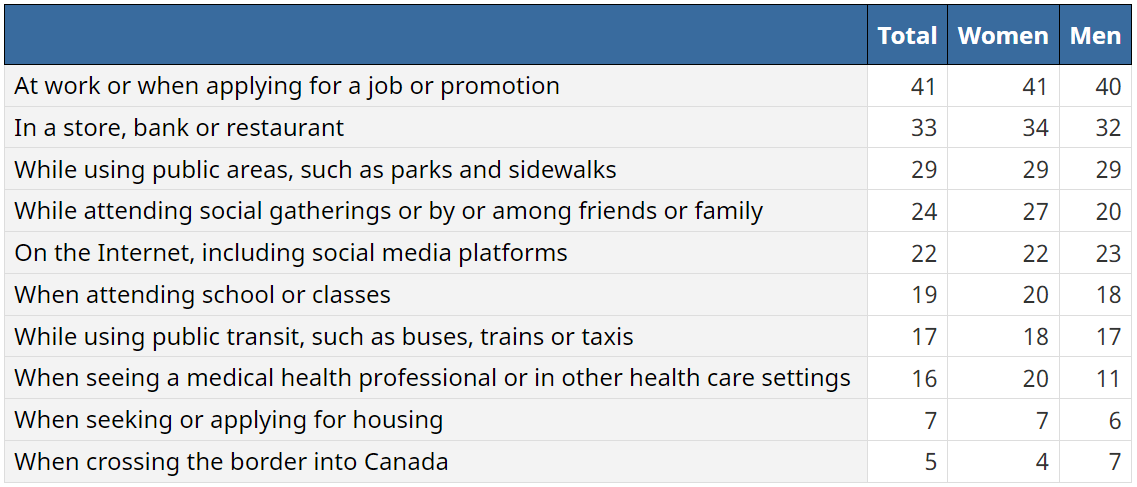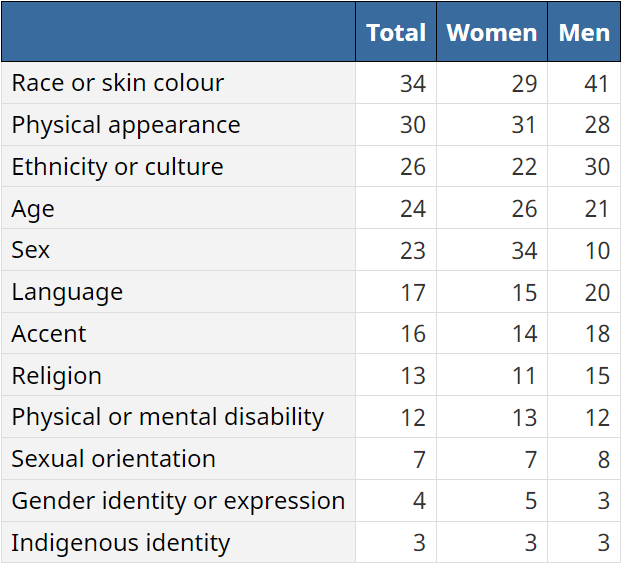
Which communities in Canada have the highest rates of discrimination?

Racial discrimination is still widespread in Canada, judging by people’s experience in the past five years, according to a Statistics Canada (StatCan) report.
More than half (51%) of racialized people in Canada aged 15 years old or older have experienced discrimination or unfair treatment in that time frame.
That’s far more compared than those of non-racialized people (27%), and all people aged 15 and up who are living in Canada (36%).
People have felt discriminated in the following scenarios:

Source: Statistics Canada
More than half (51.4%) of recent and employed immigrants say they report to a manager who is less qualified but Caucasian, ComIT.org previously reported.
Members of the 2SLGBTQ+ community were nearly twice as likely as the non-2SLGBTQ+ population to face some form of discrimination or unfair treatment in the five years prior to the survey (61% versus 32%), according to StatCan.
Among First Nations people living off reserve, Métis, and Inuit, 46% reported experiences of discrimination, compared with 33% of non-Indigenous people.
“The reasons for these experiences were largely perceived to be due to Indigenous identity and physical appearance. Indigenous people (23%) were also nearly twice as likely to be discriminated against due to a physical or mental disability compared with the non-Indigenous population (12%),” said StatCan.
Currently, the Ontario Human Rights Commission (OHRC) is working with Indigenous partners to develop human rights policy guidance to eliminate anti-Indigenous discrimination within the province’s healthcare system.
Also, people living with a disability experience elevated levels of discrimination, according to StatCan’s report based on pooled data from six waves of the Canadian Social Survey.
Nearly half (44%) of people with a disability report experiences of discrimination, compared with 32% of people without a disability.
“The most frequently-cited perceived reasons for discrimination against people with a disability were due to physical or mental disability, physical appearance, and age,” said StatCan.
Among those who have experienced discrimination, many believe these are the reasons:

Source: Statistics Canada
As a result of experiencing discrimination, people are losing confidence in the following Canadian institutions:

Source: Statistics Canada
Here’s how employers can address discrimination in the workplace, according to compliance solutions provider Sentrient:
“Unfair discrimination in the workplace is a serious issue that can have a negative impact on employees and the organization,” said Sentrient. “As an employee, manager, or employer, it is important to understand how to recognise and address unfair discrimination.”
Employees are eager for their organizations to be active in discussions when it comes to diversity in the workplace, according to a previous report from Catalyst.